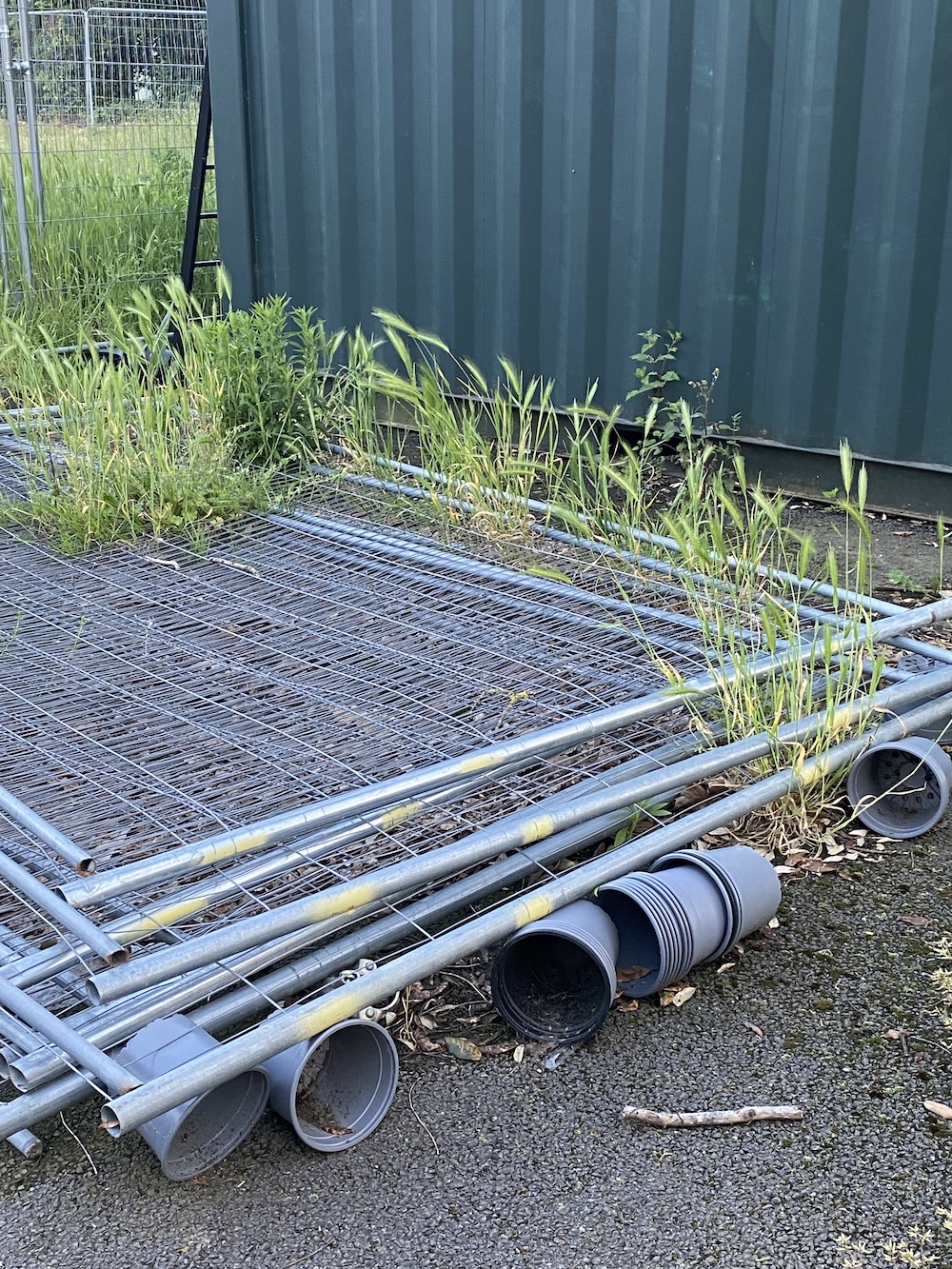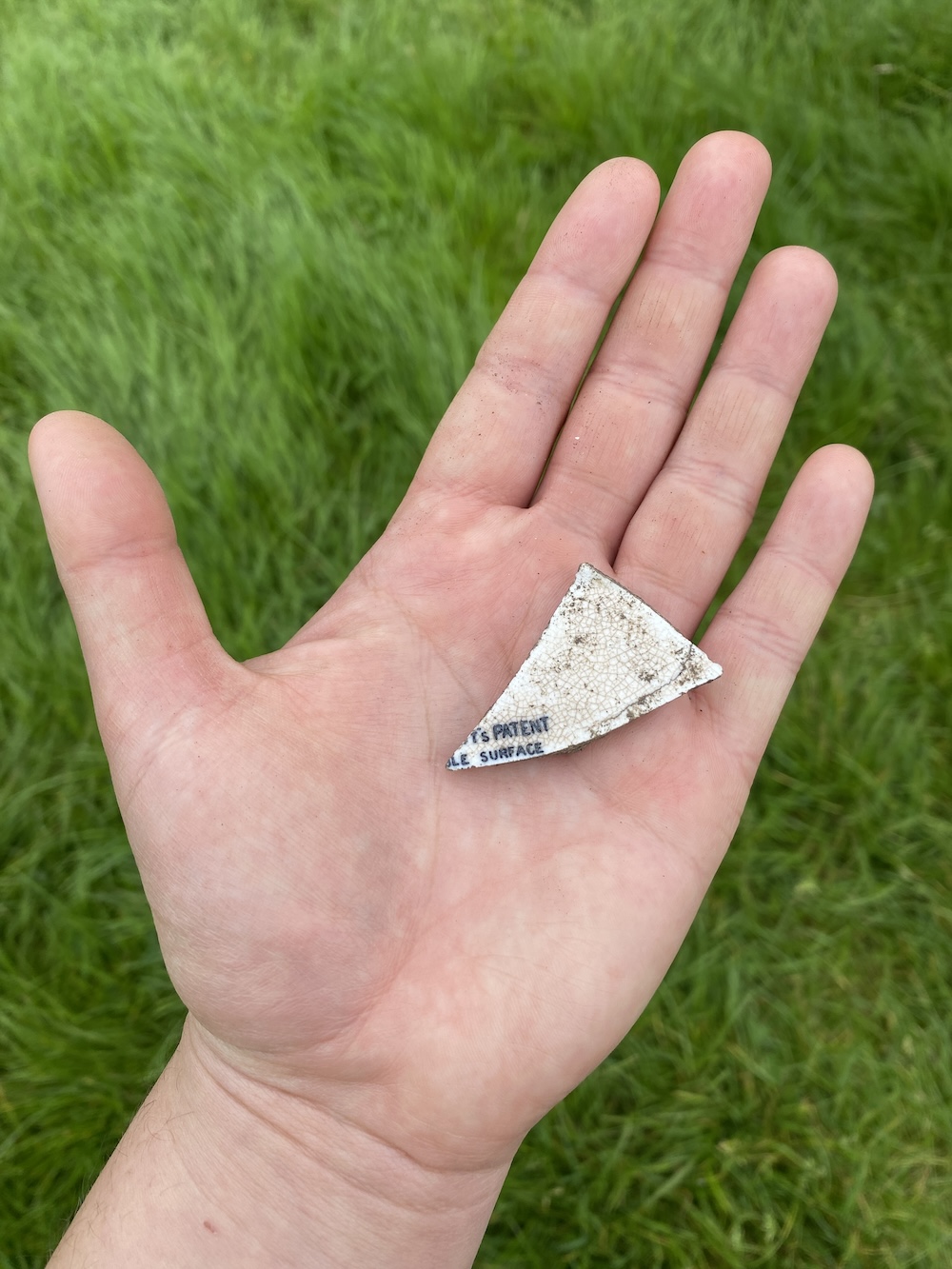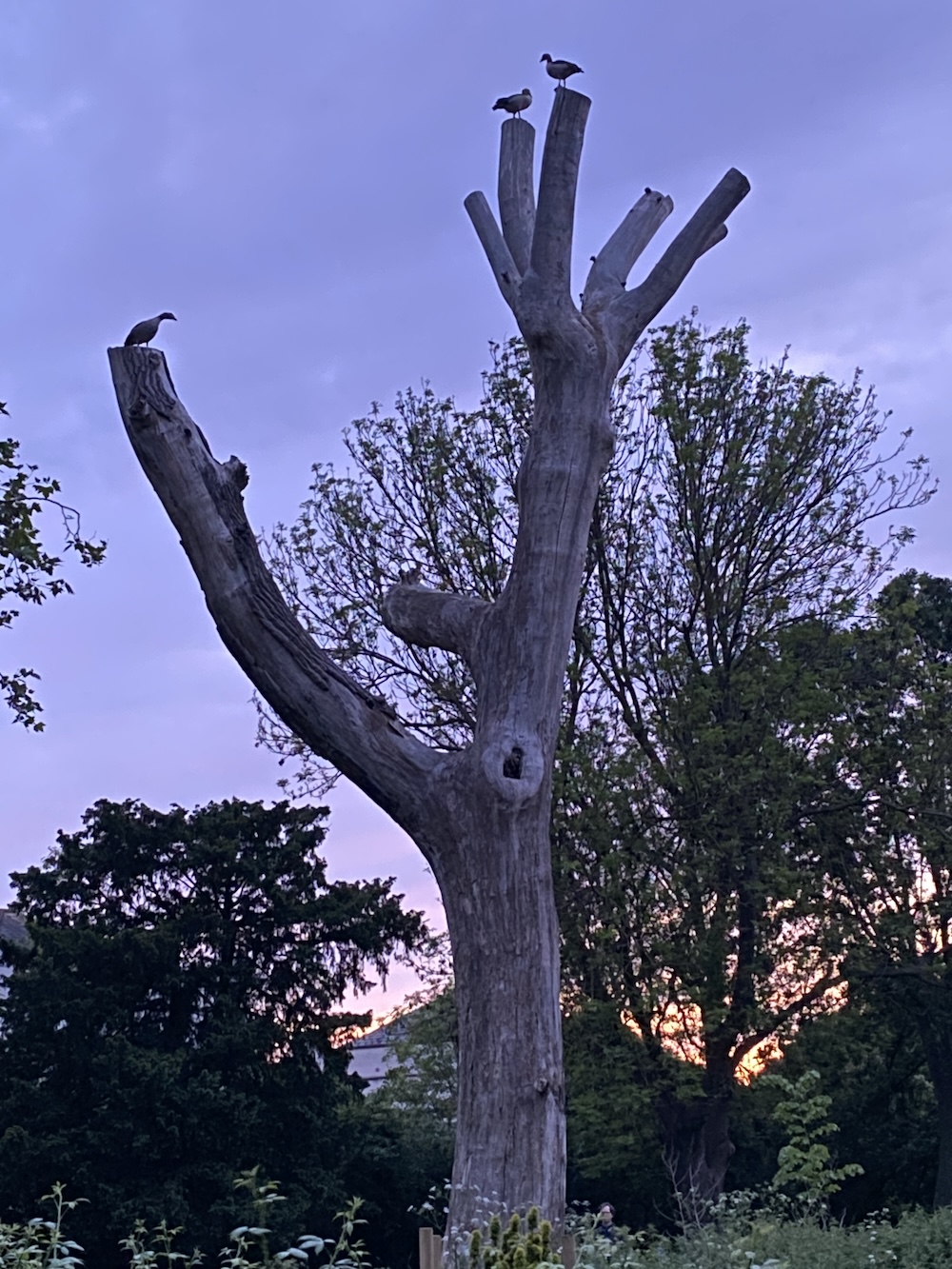Caught by the River editor Diva Harris bounds into a new column (regularity to be ascertained), sharing highlights and musings from her daily dog walks. The month of May brought barricades, buttercups, and Victorian fag butts.

Ground cover: buttercup, anemone, poppy, foxtail barley, thick carpets of clover, oxeye daisy — appropriately also known as dog daisy. A downy parakeet feather caught in the buttercups. A buttercup swirled under the dog’s beard. Do you like butter? (She does, says the buttercup, given half the chance). Your dog is like a ghost remarks a stranger as she glides through the grass. She is louder than a ghost I assure them.
The river that runs under the park is making herself known. HGVs, thousands of feet have been pounding the tarmac and the grass for weeks, and she pushes her waters up through the cracks, saturating the ground.
The greenery is fractured by barricades, walls and fences which aren’t usually there, and they confuse the dog, make her think she is trapped when she isn’t. Some of them, oppressive and metal and 20 foot high, have had bell hooks quotes about freedom slapped across them as if it will disguise the fact that they are ringfencing public land for private enterprise, pushing dog walkers, picnickers, slackliners, geriatric tai chi groups and football-playing children — many of whom have little other access to green space — to the periphery.


The dog sidles through the wires of a temporary fence which protects a newly seeded triangle of wildflower meadow, and does tight, excited doughnuts of defiance, dances across the mud, before heeding my OUT OF THERE! and slipping back. When she is collie enough to run after the frisbee, sneaking it through the fence, and sighthound enough to leave it there, I have to go and get it, tiptoeing around the new green shoots. It’s an excuse to scan the forbidden surface of the turned earth for the sherds of 19th century rubbish I know are there; the remains of either the tip of a grand house long since demolished, or the hardcore used to level and landscape the estate into a park — I’m not sure which. Ever a goody-two-shoes, I self-impose rules; I resist the urge to roam or dig and only pick up what’s made its own way to the top. I also collect and dispose of anything dangerous, like the old, thick glass of codd bottles, smashed more than 100 years ago for their marbles. Give and take: the park shows me treasure, and I tidy up a bit in return. I’m pleased to find a section of clay pipe stem and think about the episode of Detectorists where Andy, noticing his nails aren’t as dirty as the other candidates waiting to be interviewed for an archaeology job, is caught digging in the flowerbeds, authenticating his hands with the soil. I wasn’t picking up cigarette butts, he later tells his prospective employer, I saw some bits of clay pipe in the flowerbed. Pulling a handful of pipe stems from his pocket, he explains that you can date them based on the thickness of the stem and the size of the hole — the older ones are thicker, and they had a much smaller bowl because tobacco was so expensive. I reason that this stem is therefore older than the one I found washed up by the Thames a few months ago, and when I get home I place them next to each other on the kitchen windowsill. They really do look like fag butts. I suppose they essentially are fag butts, just in starched Victorian collars. Plus ça change.


Like anyone else with a casual interest in birds, I’ve recently been romanced by Cornell Ornithology Lab’s Merlin app, which records, scans, and identifies nearby birdsong. The background hum of my recordings is the jangling of a dog tag, the roar of a jet engine, the rasps and squeaks of corvids and parakeets. Anything else is a bonus. Although largely accurate, the app advises that the best way to make a positive ID is to confirm by eye. Full of the wonders, I make a rookie error, looking up at the canopy agog, open-mouthed. A blackcap! I conclude, how lovely — just at the moment it craps.

The Egyptian geese have taken to standing at the top of a big, heavily pollarded tree and honking — at each other, at the sky, at nothing in particular — from their podiums. They have a lot to say. A, the owner of a dog who loves to charge shoulder to shoulder with mine, also appreciates these things, and I find her on the other side of the tree, my double, looking up and laughing. We walk together while the dogs trot, sniff, barge and tussle in the rising dew. Out of the corner of my eye in the half-light, I think I see a bat, but it is too fat, lumbering, wings seemingly too flimsy to keep the rotund body in the air. A majestically antlered stag beetle, stretching his wings and taking to the pink sky: a miracle 7 years, and lots of rotten wood, in the making. When he was laid as a pearly egg, I was an entirely different person, living on the opposite side of the city in a flat with a pink toilet, letting in the neighbourhood cats and subsisting mainly on toast. A couple more beetles emerge. They usually come out around my birthday, which isn’t for a few weeks yet. Last year dozens of them turned up to my garden celebration in party hats — my idea of a surprise bash. It felt auspicious. A and I watch them together and she shows me where their larval mandibles have hole-punched a nearby log.

Towards the end of the month, a heavy orange full moon rises and the dog and I gaze together awhile. To own a sighthound — to be owned by one — is to necessarily embody them: ears pinned up to rustling, eyes scanning the horizon for every squirrel, fox, and plastic bag which dances on the wind. Perhaps our mutual ownership has schooled me in the art of noticing; is the reason why I am able to find the squeeing of swifts, the whisper of duck wings, the flittering of bats and the crazed triangles of domestic history in amongst the semi-dark and perma-light, the traffic and shouting and music of inner-city life.
